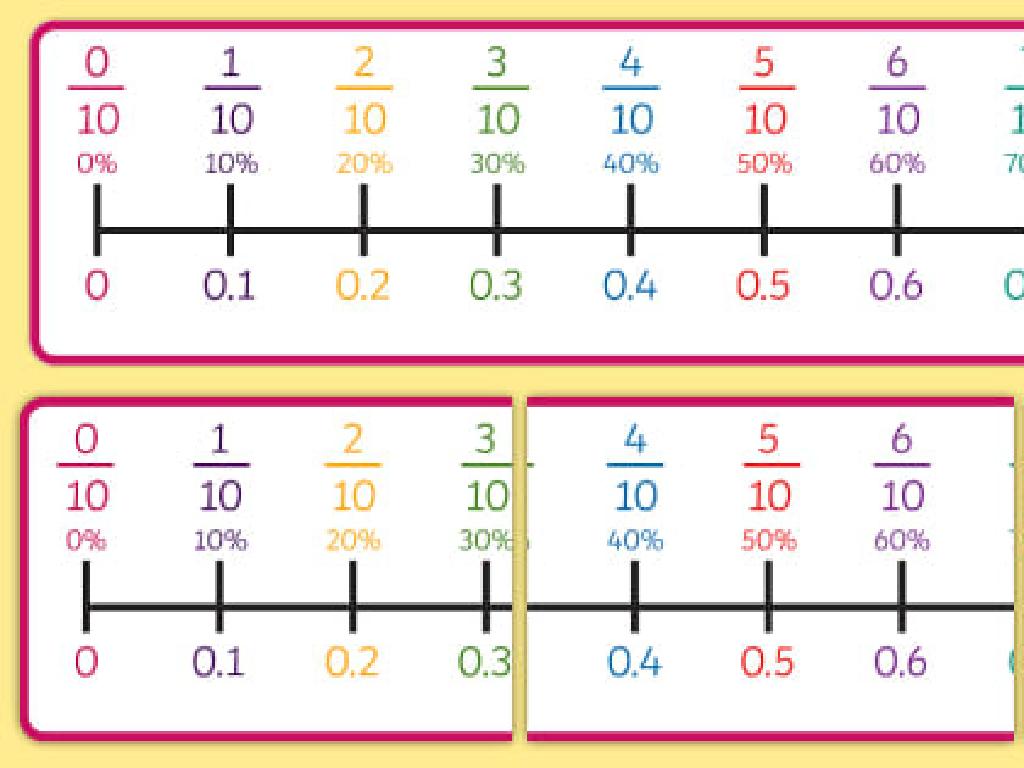Identify Animals With And Without Backbones
Subject: Science
Grade: First grade
Topic: Classification
Please LOG IN to download the presentation. Access is available to registered users only.
View More Content
Welcome to Animal Classification!
– Learn about animal types
– Discover animals with backbones
– Animals like dogs, birds, and fish have backbones
– Identify animals without backbones
– Insects and jellyfish do not have backbones
– Recognize backbones in animals
– Look at pictures to see if you can spot the backbone
|
This slide introduces first graders to the concept of animal classification based on the presence or absence of a backbone. Start by explaining that animals can be grouped in different ways. Focus on the distinction between vertebrates (animals with backbones) and invertebrates (animals without backbones). Use simple examples that are familiar to children, such as pets like dogs and cats for vertebrates, and common insects for invertebrates. Provide clear visuals or props to help students understand what a backbone looks like. Encourage them to observe and think about the animals they see every day and whether those animals have a backbone. The goal is for students to be able to recognize and classify animals based on this characteristic by the end of the lesson.
What is a Backbone?
– Backbone: a series of bones
– Like a stack of blocks down an animal’s back
– Backbone helps animals stand
– Protects the spinal cord
– Like a hard tube protecting a soft rope inside
– Animals with backbones: vertebrates
– Vertebrates, like people, dogs, and birds
|
This slide introduces the concept of a backbone and its importance in the animal kingdom. Explain that a backbone is made up of many bones connected together, much like a stack of blocks. It gives animals their shape and helps them stand up or move around. The backbone also protects the spinal cord, which is like a soft rope with important nerves that send messages from the brain to the rest of the body. Emphasize that animals with backbones are called vertebrates and include familiar creatures such as humans, household pets, and birds. Use simple language and relatable comparisons to help first graders grasp these concepts. Encourage students to think of animals they know and discuss whether they have backbones or not.
Meet the Vertebrates
– Vertebrates have backbones
– Fish, birds, cats are vertebrates
– Like goldfish, parrots, and lions
– Humans have backbones too
– All are different but have this bone
– It’s what makes them all vertebrates
|
This slide introduces the concept of vertebrates to first-grade students. Vertebrates are animals that have a backbone, which is a series of bones that runs along the back of an animal. Examples provided include familiar animals such as fish, birds, cats, and humans to help students relate to the concept. Encourage the children to think of other animals that might have backbones, prompting them with questions and providing guidance as needed. Highlight the diversity among vertebrates, emphasizing that despite their differences in size, shape, and habitat, the presence of a backbone is a common feature. This will help students understand the basic classification of animals in science.
Invertebrates: Animals Without Backbones
– Invertebrates lack backbones
– Snails, spiders, jellyfish are examples
– Snails carry shells, spiders have eight legs, jellyfish float in water
– They may have soft bodies
– Without bones, their bodies are not hard
– Some have shells or exoskeletons
– Shells protect snails; exoskeletons cover spiders
|
This slide introduces first graders to the concept of invertebrates, which are animals without backbones. Emphasize that not all animals need bones to live or move. Use familiar examples like snails, spiders, and jellyfish to illustrate the diversity within invertebrates. Explain that some invertebrates have soft bodies, while others have different forms of protection and support, such as shells or exoskeletons. Encourage students to think of other animals without backbones and consider how these creatures live and move differently from those with backbones. This will help them understand the basic principles of animal classification.
Let’s Compare: Animals with and Without Backbones
– Vertebrates have backbones
– Like humans, dogs, and birds
– Vertebrates: mammals, birds, fish
– Examples: cats, parrots, goldfish
– Invertebrates: insects, snails
– Examples: butterflies, spiders, worms
– Invertebrates don’t have backbones
|
This slide introduces first graders to the basic classification of animals based on the presence or absence of a backbone. Vertebrates are animals with backbones and include familiar groups such as mammals, birds, and fish. Invertebrates, which lack a backbone, encompass a wide range of animals including insects and snails. Use tangible examples like pets (dogs and cats) for vertebrates and common insects (butterflies) for invertebrates to make the concept relatable. Encourage students to think of more examples and ask them to classify those animals as vertebrates or invertebrates. This will help solidify their understanding of the classification system and the diversity of animal life.
Class Activity: Sorting Animals
– Be a scientist for the day!
– Sort animals into two groups
– Use pictures to classify animals
– Animals with backbones
– Think of animals like dogs, birds, or fish
– Animals without backbones
– Consider insects, worms, or snails
|
This activity is designed to help students understand the concept of classification by identifying animals with and without backbones. Provide a variety of animal pictures and guide the students to work in groups to classify them. Encourage discussion among the students to decide why an animal belongs in a particular group. Possible activities include: 1) Matching animals to their shadow figures, 2) Sorting stuffed animals or toy figures, 3) Creating a collage of magazine cutouts, 4) Drawing their favorite animals and classifying them. This hands-on experience will reinforce their understanding of vertebrates and invertebrates in a fun and interactive way.
Review: Animals with and Without Backbones
– What is a vertebrate?
– Animals with backbones, like birds and fish
– Define an invertebrate
– Animals without backbones, like worms and insects
– Recall vertebrate examples
– Recall invertebrate examples
|
This slide is meant to recap what we’ve learned about vertebrates and invertebrates. Start by asking the class to define a vertebrate, guiding them to understand that these are animals with a spine or backbone. Then, ask them to explain what an invertebrate is, emphasizing that these animals do not have a backbone. Use examples from the lesson to help jog their memory, such as birds, fish, worms, and insects. Encourage the students to think of other examples as well. This review will help solidify their understanding of the classification of animals based on the presence or absence of a backbone.
Conclusion & Homework: Animal Classification
– Recap: Animals with & without backbones
– Homework: Draw vertebrate & invertebrate
– Choose one animal with a backbone and one without
– Share your drawings next class
– Show and tell about your favorite animals
– Discuss what you’ve learned
– Tell the class about their spine or lack of it
|
This slide wraps up the lesson on animal classification, focusing on the distinction between vertebrates and invertebrates. The homework assignment is designed to reinforce the day’s learning by having students apply their knowledge creatively. Encourage them to think about the characteristics that differentiate their chosen animals, such as the presence or absence of a backbone. In the next class, provide an opportunity for each student to present their artwork and share facts about their chosen animals. This activity will help solidify their understanding and allow them to practice their presentation skills.






